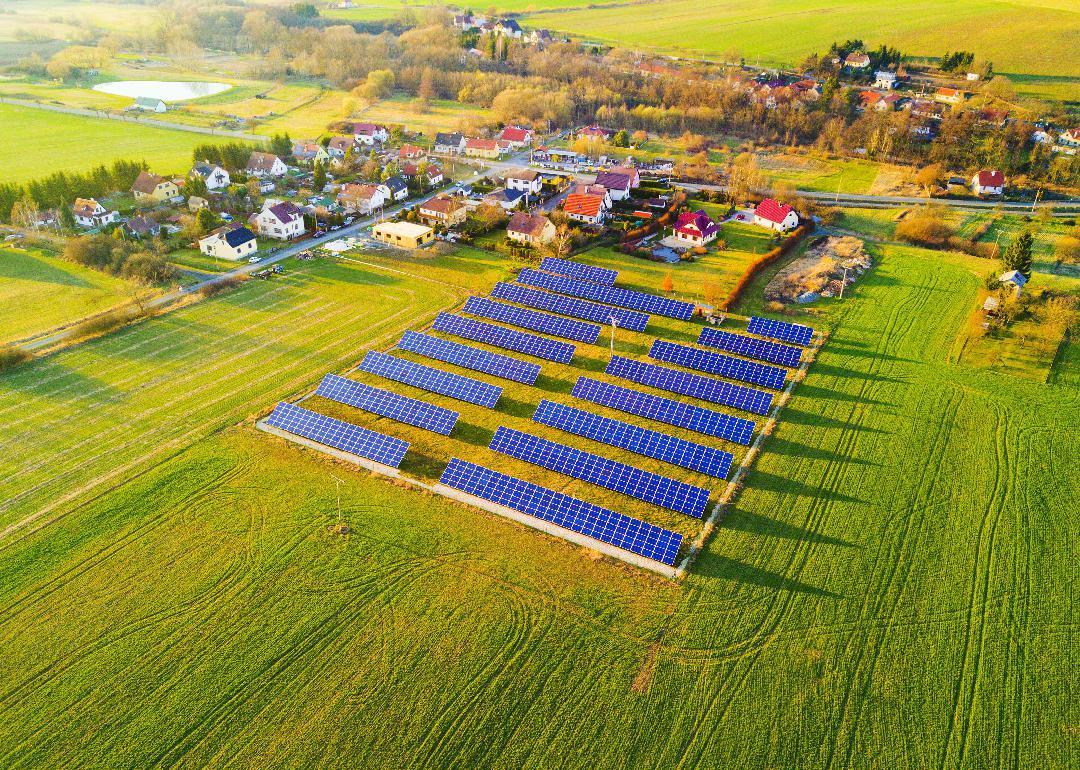
The only 7 countries that are on track to meet the Paris Agreement—and how they're doing it
The only 7 countries that are on track to meet the Paris Agreement—and how they're doing it
The Paris Agreement, ratified in 2015 by 195 counties, was one of the most ambitious diplomatic accords in history and the first climate agreement of its kind. The cornerstone of that document is that the countries who signed it have pledged to work toward keeping global warming below 2 degrees Celsius (3.6 degrees Fahrenheit), ideally 1.5 degrees Celsius (2.7 degrees Fahrenheit). That threshold, if met, would represent humanity’s ability to prevent the worst impacts of climate change—although some repercussions are unavoidable and already underway, such as the increased intensity and frequency of natural disasters, melting ice caps, and climate-caused refugee crises around the world farms dry up from drought.
Of the many countries party to the Paris Agreement, however, few are on track to actually meet its mandates. One measure of this progress (or lack thereof) is the Climate Action Tracker (CAT), an independent scientific analysis produced by a consortium of three researcher organizations that has tracked global climate policies since 2009. CAT’s analysis monitors the progress of major nations toward goals set by the Paris Agreement, with 32 nations evaluated to date based on their national pledges, long-term targets, and current policies.
Of these countries, just seven are ranked by the CAT as 2 degrees Celsius (3.6 degrees Fahrenheit) compatible or 1.5 degrees Celsius (2.7 degrees Fahrenheit) compatible. Two of those seven rank as compatible with a global emissions reduction plan that would hold warming below 1.5 degrees Celsius, and five rank as compatible with holding warming below 2 degrees Celsius.
The United States, which announced its intention to leave the Agreement in 2017, was found by the CAT to be “critically insufficient” in terms of climate mitigation policy.
In the following gallery, Stacker explores the projected emissions, policy goals, and tangible progress of each of these seven nations based on CAT data (last updated August 2019). Read on to find out which nations made the cut and how they’re achieving their goals.
You may also like: States with the fastest growing clean energy production

Bhutan: 2 degrees Celsius (3.6 degrees Fahrenheit) compatible
- Historical emissions, 2008: 1.8 metric tons of CO2 or equivalent
- Current/projected emissions, 2018: 3.5 metric tons of CO2 or equivalent
- Projected emissions, 2028: 5.4 metric tons of CO2 or equivalent
- Primary goal: Remain carbon neutral
- More info: https://climateactiontracker.org/countries/bhutan/
The tiny Buddhist kingdom of Bhutan, situated on the eastern edge of the Himalayas, has already reached carbon neutrality—a goal that the Paris Agreement calls for the world to reach by the second half of the century. Bhutan emphasizes sustainability and conservation over rapid growth—in fact, the country measures Gross National Happiness instead of the commonly used standard of gross domestic product. Nearly all of Bhutan’s electricity comes from hydropower, and its heavily forested land mass serves as a carbon sink.

Bhutan: How they're doing it
There is little risk of Bhutan sacrificing sustainability as the country develops. Written into its constitution is a rule that at least 60% of the country’s land be forested—10% less than Bhutan’s current forest cover and almost 30% more than the current forested area in the United States. Bhutan has also set a goal of maintaining its carbon neutrality even as the country develops and urbanizes. There are only 125 cars per 1,000 residents in Bhutan, but the government is already scaling up subsidies for electric taxis and other vehicles so that if demand increases, emissions won’t.
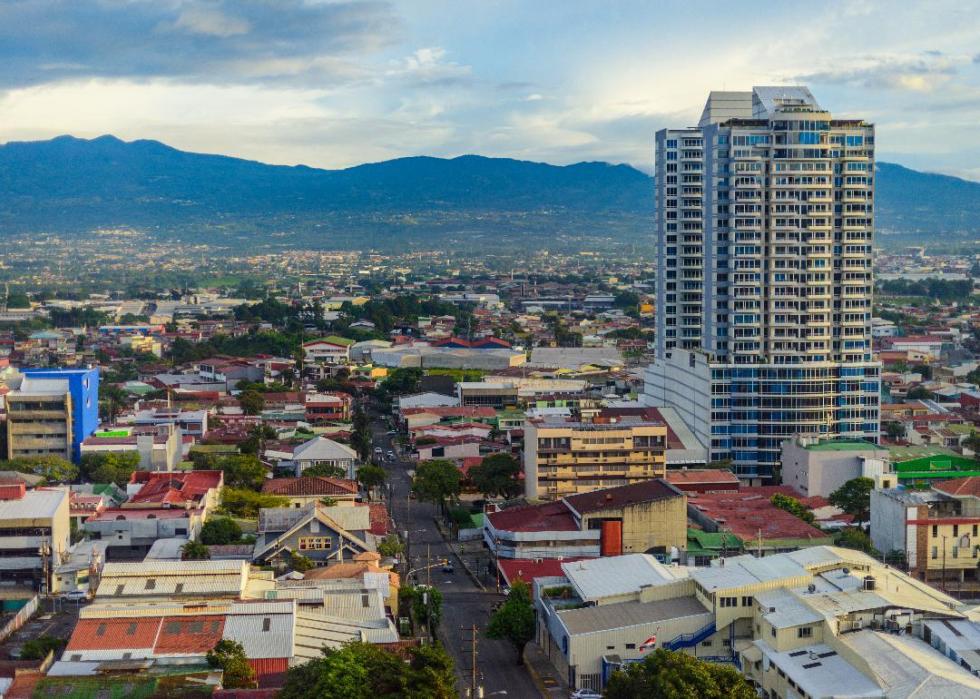
Costa Rica: 2 degrees Celsius (3.6 degrees Fahrenheit) compatible
- Historical emissions, 2008: 12.8 metric tons of CO2 or equivalent
- Current/projected emissions, 2018: 14.9 metric tons of CO2 or equivalent
- Projected emissions, 2028: 12.5-14.3 metric tons of CO2 or equivalent
- Primary goal: Net-zero emissions by 2050
- More info: https://climateactiontracker.org/countries/costa-rica/
Costa Rica is already close to meeting its 2030 emissions reduction target and hopes to reach carbon neutrality by 2050. The Central American nation in February 2019 published a National Decarbonization Plan, which included recommendations for every sector of its economy, including improved farming practices, electrified transport, cleaner industry, and more. Costa Rica’s electricity is already derived largely from renewables—more than 98% in 2018 for the fourth year in a row; the country is aiming for 100% renewable energy by 2021.
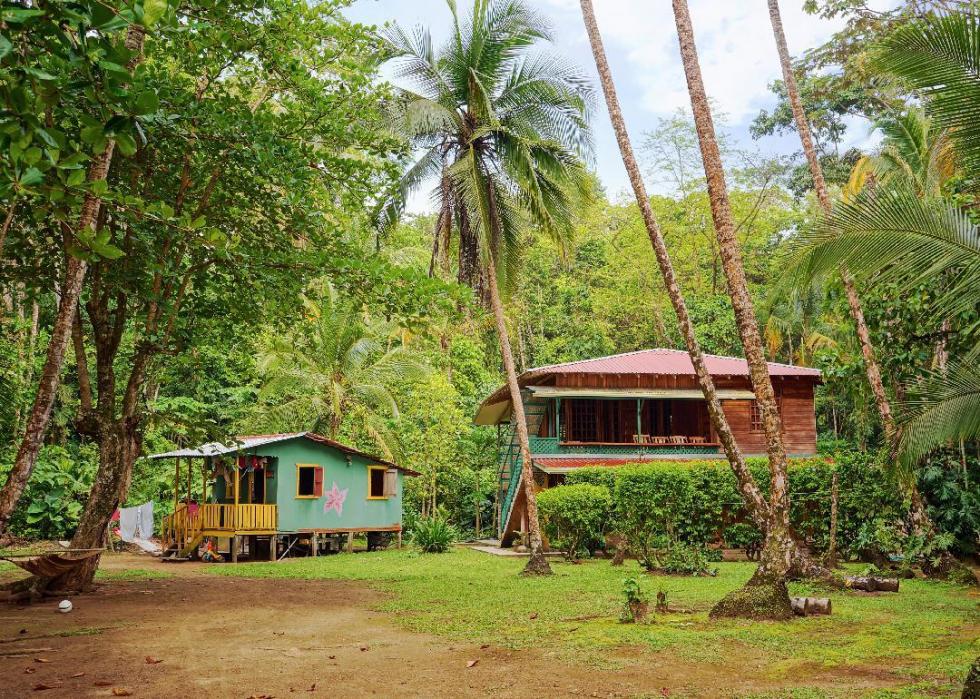
Costa Rica: How they're doing it
Costa Rica has been working toward carbon neutrality for years. The country in 2012 established a National Programme for Carbon Neutrality, designed to ensure the country reached carbon neutrality by 2021, and efforts have only ratcheted up since. The Costa Rican government in 2018 passed a law to incentivize electric vehicle usage and electrify the country’s bus fleet. Costa Rica utilizes cap and trade policies to encourage industry-wide decarbonization and even keeps a registry of the carbon footprint of organizations in the country.
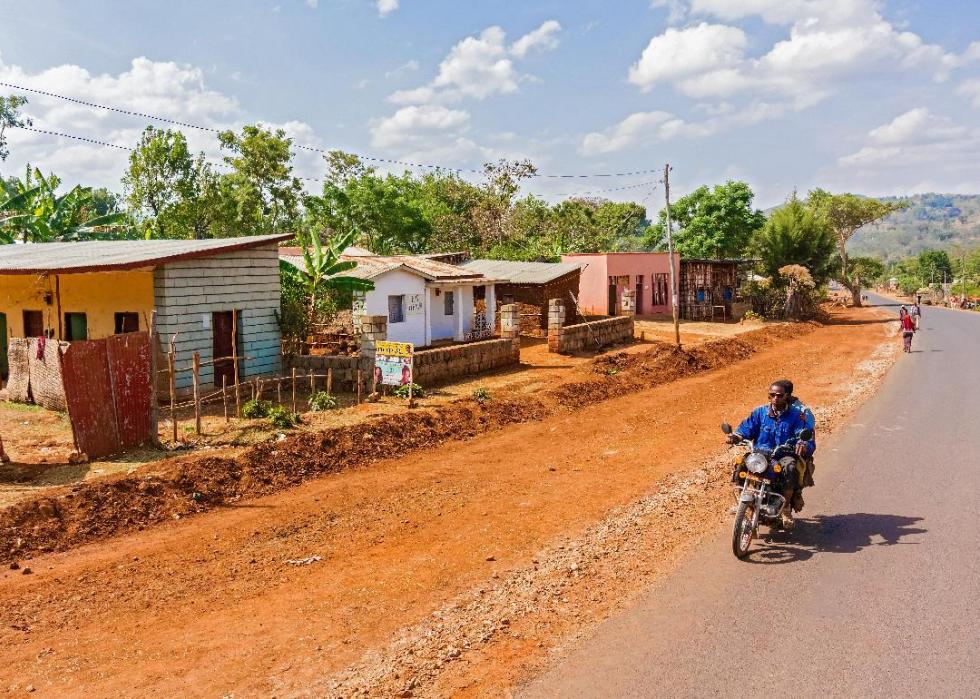
Ethiopia: 2 degrees Celsius (3.6 degrees Fahrenheit) compatible
- Historical emissions, 2008: 99 metric tons of CO2 or equivalent
- Current/projected emissions, 2018: 135-142 metric tons of CO2 or equivalent
- Projected emissions, 2028: 177-229 metric tons of CO2 or equivalent
- Primary goal: Reduce emissions by 64% below business-as-usual by 2030
- More info: https://climateactiontracker.org/countries/ethiopia/
Ethiopia is positioning itself to become a major player throughout East Africa in green energy and sustainable technology by developing and exporting hydropower, solar power, and other renewable energy. The African nation is also committed to climate mitigation through forestry and is developing a plan to become carbon neutral.
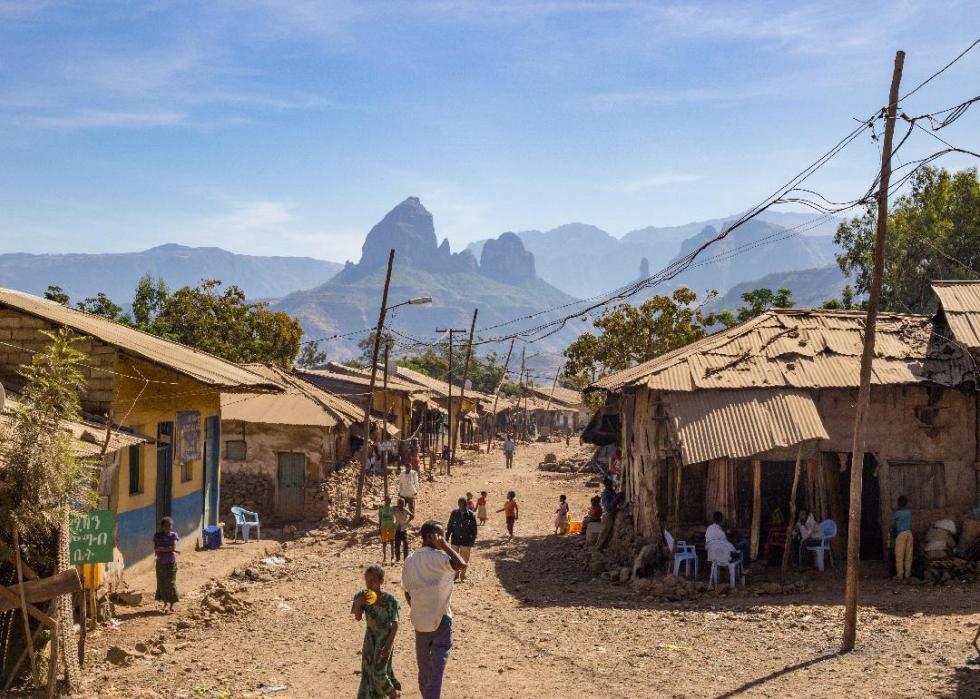
Ethiopia: How they're doing it
Ethiopia is focused on scaling its development through a green economy in order to achieve prosperity and climate resilience. The country’s climate plan is focused on reducing agricultural emissions, expanding renewable electricity, protecting and expanding forests, and adopting energy-efficient strategies for transport and building. Ethiopia is also working to increase access to transit and electricity and hopes to do so primarily through renewable sources.

India: 2 degrees Celsius (3.6 degrees Fahrenheit) compatible
- Historical emissions, 2008: 2,076 metric tons of CO2 or equivalent
- Current/projected emissions, 2018: 3,032-3,083 metric tons of CO2 or equivalent
- Projected emissions, 2028: 4,256-4,354 metric tons of CO2 or equivalent
- Primary goal(s): 40% non-fossil-based power capacity by 2030
- More info: https://climateactiontracker.org/countries/india/
India is on track to reach its goal of 40% non-fossil power capacity a decade earlier than targeted. The country is a global leader in renewables, with investments in clean energy exceeding those in fossil fuel. As costs of solar and other renewables continue to drop, India will be scaling these sources even further and faster. The government also has a carbon pricing system in place for companies.

India: How they're doing it
India taxes coal heavily and uses subsequent funds to subsidize and further develop clean energy infrastructure. The country is also requiring large power consumers to source 21% of their supply from renewable energy by 2021 (up from 17% in 2018). In order to prepare India for climate change, the government runs climate mitigation and adaptation programs for farmers, since more than half the population generates income from agriculture.
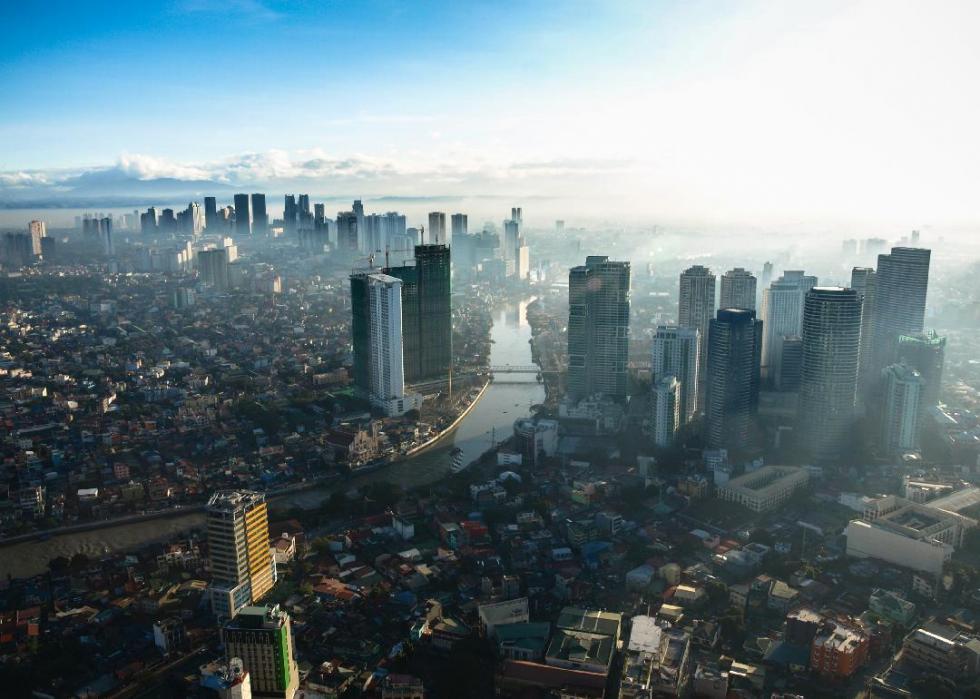
Philippines: 2 degrees Celsius (3.6 degrees Fahrenheit) compatible
- Historical emissions, 2008: 144 metric tons of CO2 or equivalent
- Current/projected emissions, 2018: 196 metric tons of CO2 or equivalent
- Projected emissions, 2028: 251-267 metric tons of CO2 or equivalent
- Primary goal: Reduce emissions by 70% below business-as-usual emissions by 2030
- More info: https://climateactiontracker.org/countries/philippines/
The Philippines' 2015 goal of reducing emissions by 70% before 2030 is an ambitious target for the country rated in 2018 third-most vulnerable to climate change. While there have been serious investments made in renewable energies, the Philippines remains coal-dependent.

Philippines: How they're doing it
Although the country continues to develop new coal plants, it also taxes coal and there are plans in place to expand renewable energy. Following a directive by Philippines President Rodrigo Duterte to end the country’s dependence on coal, the Philippines Department of Energy in July 2019 announced a fast-tracking of two energy policies: Renewable Portfolio Standards and Green Energy Option.
The Philippines also prioritizes the protection of forests: It is illegal to harvest from or cut residual forests throughout the country. President Duterte further signed into law a bill that created an Energy Efficiency and Conservation Committee to help keep electrical costs and emissions down.

Morocco: 1.5 degrees Celsius (2.7 degrees Fahrenheit)
- Historical emissions, 2008: 87.5 metric tons of CO2 or equivalent
- Current/projected emissions, 2018: 105 metric tons of CO2 or equivalent
- Projected emissions, 2028: 144 metric tons of CO2 or equivalent
- Primary goal: 42% of electricity produced from renewable energy by 2020, 52% by 2030
- More info: https://climateactiontracker.org/countries/morocco/
Morocco is one of only two countries rated by the Climate Action Tracker as being 1.5 degrees Celsius compatible, meaning that the country’s Paris Agreement commitment is consistent with limiting global warming to 1.5 degrees Celsius. The country is quickly shifting away from coal-powered energy and investing heavily in renewable energy, putting Morocco on track to reach its 2020 and 2030 renewable targets.

Morocco: How they're doing it
Morocco’s overall climate change policy includes coordination across various sectors from agriculture to energy to transportation, but the country’s investment in clean energy is key to its success. Its energy strategy includes rapid development and expanded use of renewables like wind and solar and growing its public transportation rail network to further limit emissions.
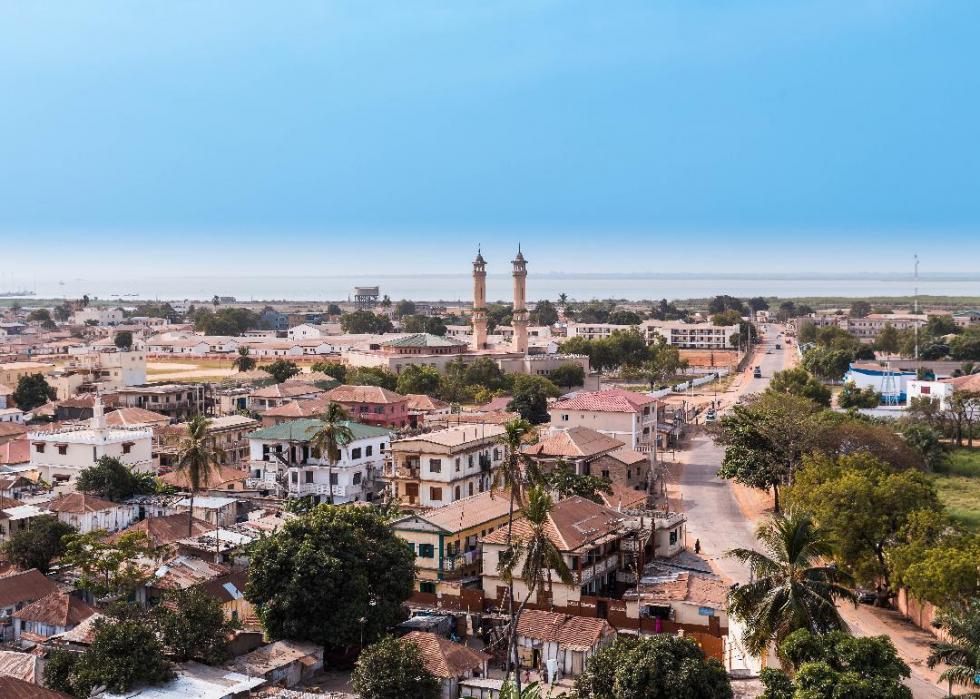
Gambia: 1.5 degrees Celsius (2.7 degrees Fahrenheit)
- Historical emissions, 2008: 1.7 metric tons of CO2 or equivalent
- Current/projected emissions, 2018: 2.7 metric tons of CO2 or equivalent
- Projected emissions, 2028: 2.6 metric tons of CO2 or equivalent
- Primary goals: Reduce emissions by 2.7% below business-as-usual by 2030 (unconditional); reduce by 45.4% (with international financial support)
- More info: https://climateactiontracker.org/countries/gambia/
The only other country ranked by the CAT that is in the 1.5 degrees Celsius compatible category is the African nation of Gambia. Unlike many other developing nations, Gambia is aiming to reduce emissions—not just limit emissions growth—which it will achieve by investing in renewable energy. The country has also committed to significant forest protection and restoration as well as sustainable agricultural practices.
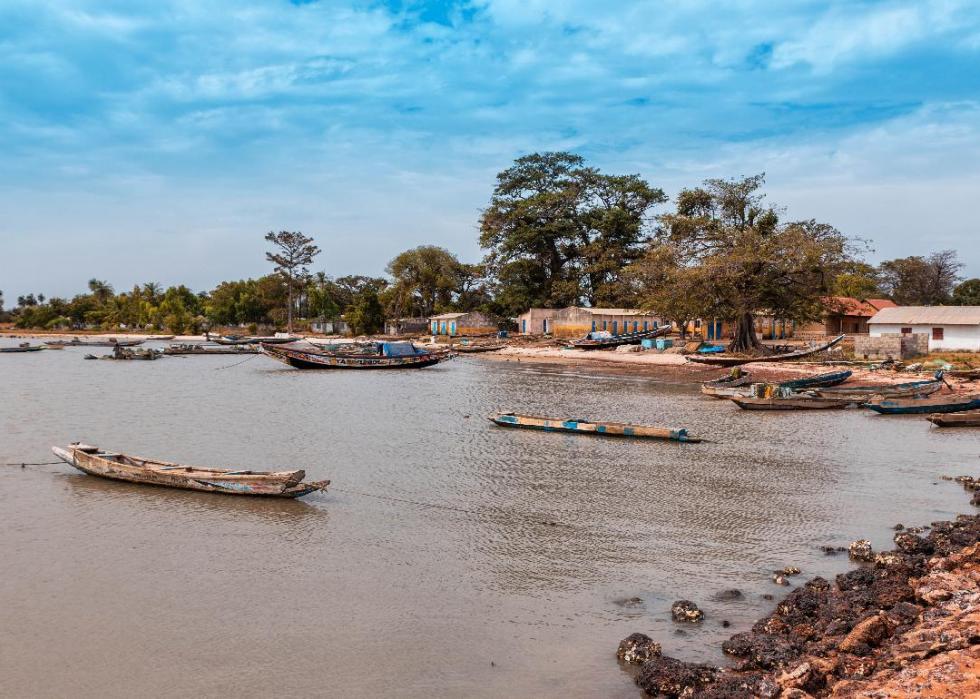
Gambia: How they're doing it
With international support, Gambia has invested in the country’s first large-scale solar project. The country also embarked in 2018 on a mission to restore more than 10,000 hectares of forest, savanna, and mangroves. Gambian citizens are encouraged to use efficient cookstoves to limit emissions and have created a renewable energy account for a 10th of all energy generated by 2020. The Gambia will need international support to scale up its sustainability efforts, but the government there has shown commitment to the country’s goals. With international aid, Gambia is likely to meet them.
You may also like: States with the fastest-growing clean energy production



